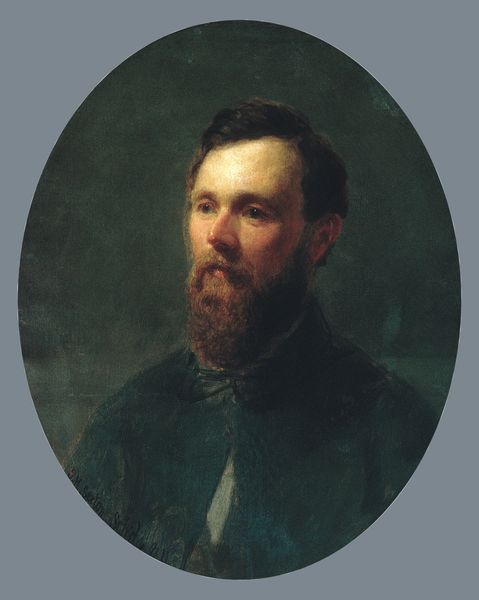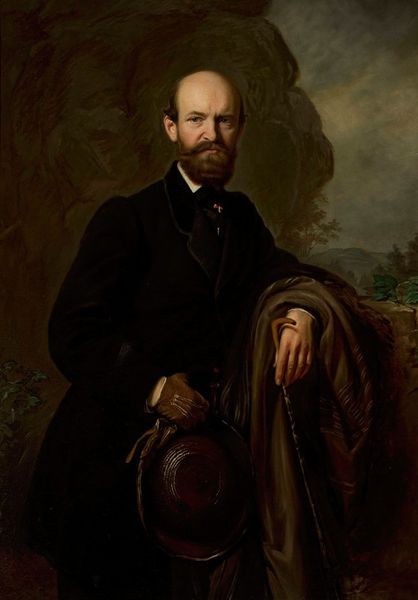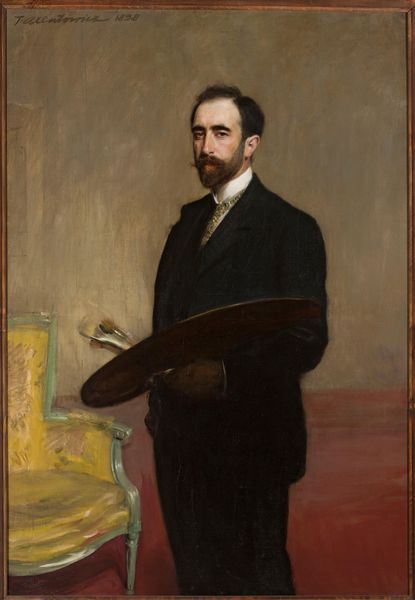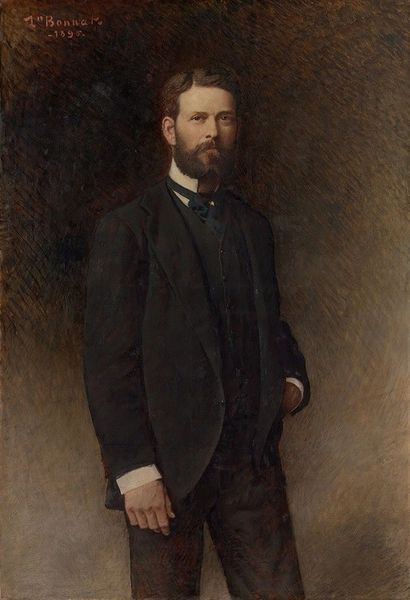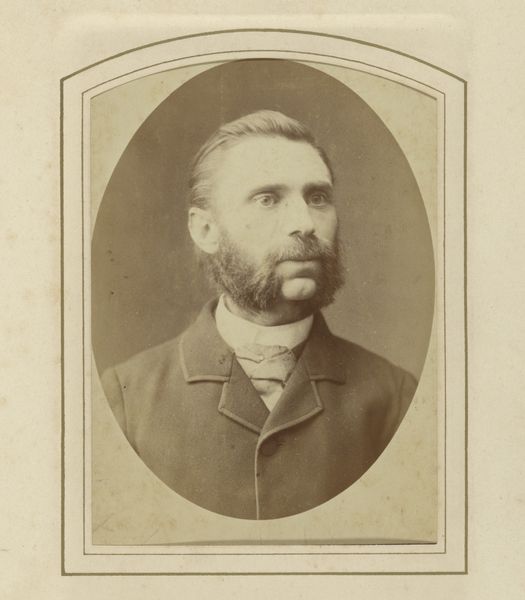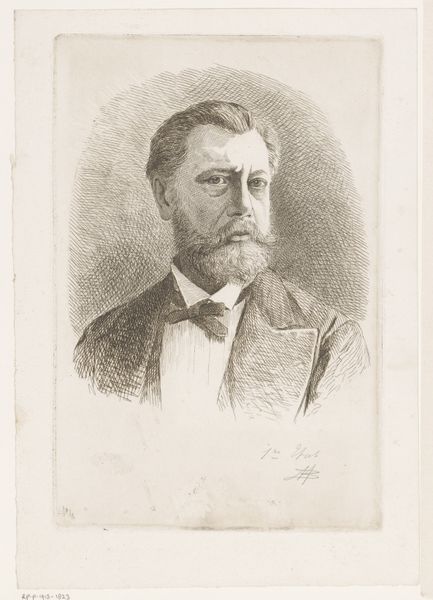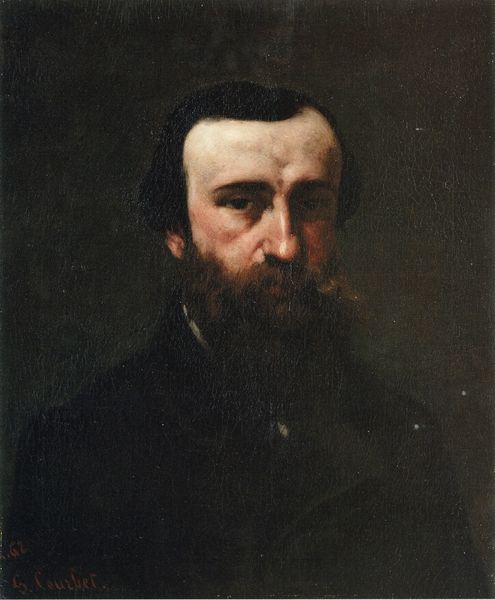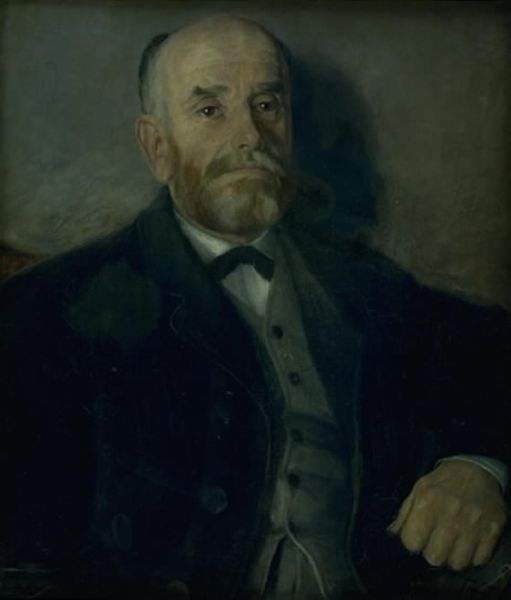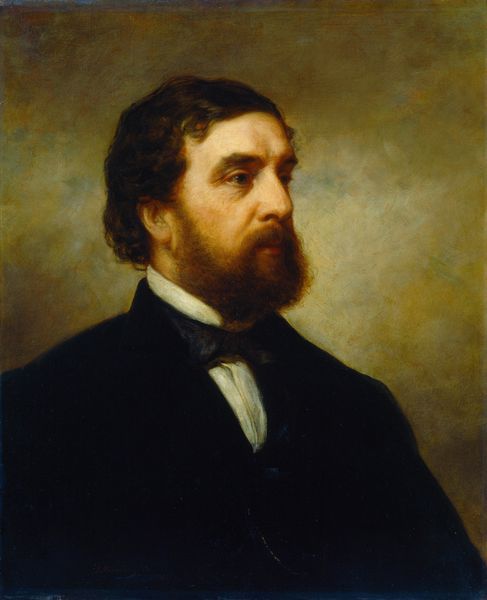
painting, oil-paint, impasto
#
portrait
#
portrait
#
painting
#
oil-paint
#
impasto
#
academic-art
#
realism
Dimensions: overall: 61 x 50.9 cm (24 x 20 1/16 in.) framed: 76.2 x 66 x 6.7 cm (30 x 26 x 2 5/8 in.)
Copyright: National Gallery of Art: CC0 1.0
Editor: Here we have Thomas Eakins' 1899 oil on canvas portrait of Louis Husson. I'm immediately drawn to the serious, almost melancholic mood and the sitter's gaze that drifts off to the side. How do you interpret the social and historical context surrounding this portrait? Curator: Eakins painted this during a period where academic art was being challenged by impressionism, though he never fully embraced the style. Looking at the heavy impasto, it’s hard to ignore Eakins’ devotion to realism, even in the face of changing tastes. It feels less about idealization and more about documentation of a sitter. Considering the politics of imagery at that time, how do you view his decision to render Husson so plainly, without adornment? Editor: It feels like Eakins is trying to present Husson authentically, almost stripping away any artifice. Perhaps, then, it’s a commentary on the artifice of traditional portraiture? Is it challenging social norms, portraying individuals without romanticizing them? Curator: Precisely. Museums often shaped perceptions through idealized portrayals, but here Eakins almost seems to push back. Consider the institutions that displayed art: they reflected certain social and cultural values. Was Eakins subtly questioning who deserves to be remembered, who gets to be elevated through art? Editor: It definitely pushes me to consider the motivations behind portraiture beyond mere representation, how it plays into social narratives. Curator: Exactly. Understanding the period and its institutional framework helps us decipher the possible critiques embedded in this seemingly straightforward portrait. Editor: This conversation reframed my initial assumptions. I was focused on the somberness but missed the possible social commentary. Thanks for opening my eyes to those potential narratives. Curator: Likewise, reflecting on your perspective, it drives home how critical it is to question whose stories museums choose to tell and *how* they're telling them.
Comments
No comments
Be the first to comment and join the conversation on the ultimate creative platform.
